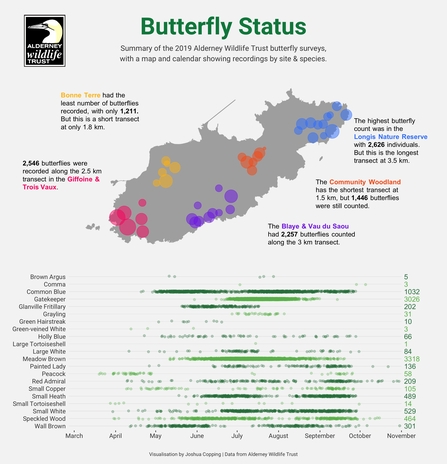The AWT walk five butterfly transect routes from April – September as part of the Butterfly Conservation monitoring scheme. The data is some of our most long-term on the island and the counts are made on all of our reserves and sites we manage for wildlife.
As you can see from our infographic we counted over 10,000 butterflies from 20 different species in 2019.
Surveys like this help inform our conservation work, so we can see long term trends and how our conservation work is benefitting certain species. Butterfly numbers naturally vary each year depending on the weather and other events that may affect them, their caterpillars and their food plants. For example, the caterpillars of the white letter hairstreak (a resident rarity here) rely on elm leaves for food. After Dutch elm disease devastated the trees in Britain the numbers of the hairstreak also declined. With the planting of disease-resistant elm in some locations the butterfly numbers have begun to recover. In Alderney, as we never had a large number of mature elm trees, the butterflies were never widespread (which is why it is unlikely to be found on any of our transects either). The AWT have planted elms that are resistant to the disease in the community woodland, hopefully ensuring the future of this butterfly on our island for the future.


